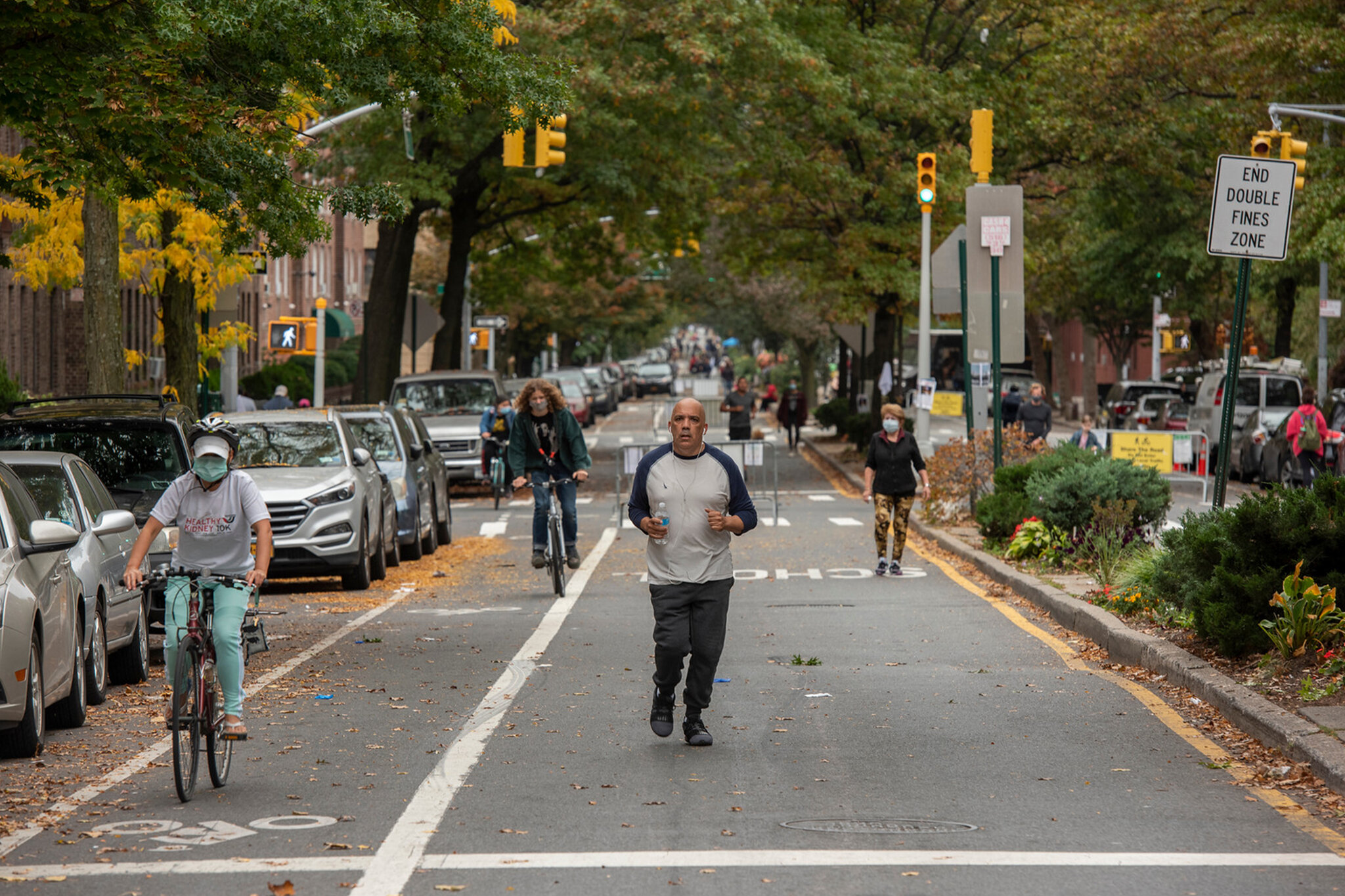
Opinion: Who Gets to Enjoy NYC’s Open Streets?
“This program was a lifeline for New York City during the pandemic, and now it needs more resources and structural support to reach its full potential.”

Jeanmarie Evelly
An Open Street in Astoria, Queens at the start of the pandemic in 2020.
As New York City winds down another summer enjoying the post-pandemic Open Streets program, you may be hearing that cracks are beginning to show.
But the problem is not in the Open Streets concept itself—it’s clear that reallocating street space for people and programming is not only popular but valuable. Rather, the cracks are in the foundation of how New York City manages its Open Streets. Our current iteration of the program was developed quickly, when COVID-19 created a sudden and urgent need for abundant outdoor space. It’s been extremely popular, and now we have the experience and perspective needed to fine-tune and improve. It’s time for Open Streets version 2.0.
As Winnie Hu explored in a recent article, managing an Open Street in 2022 is an onerous task. Each location is responsible for applying to the program, coordinating volunteer or paid labor, scheduling programming, and acquiring security, sanitation and maintenance. For this reason, the most successful Open Streets are run by Business Improvement Districts; these organizations already have the necessary structure and experience to complete the process. Other successful locations, like Prospect Heights in Brooklyn, run smoothly because of massive fundraising projects from the surrounding community, to the tune of $100,000 and intensive volunteer organizing.
But that creates inequity. BIDs are already in areas that enjoy high levels of public service and amenities. It is precisely the neighborhoods without these amenities that would benefit the most from well-managed, community-centered public space. Relying on disposable time and money from the surrounding area almost ensures that Open Streets can only thrive in already wealthy neighborhoods. And that’s bearing out, as we see smaller Open Streets struggling under the effort to maintain consistency and quality. This program was a lifeline for New York City during the pandemic, and now it needs more resources and structural support to reach its full potential.
READ MORE: The Bronx Gets Short-Changed in NYC’s ‘Open Streets’ Program
Again, none of these issues are indicators of Open Streets popularity or value. We just need a new model. That is exactly why at Open Plans we advocate for the creation of an Office of Public Space Management. This new city agency would holistically manage Open Streets across the five boroughs. It would create a central hub to ensure city funds are dispersed equitably and effectively, streamline sanitation and maintenance and provide leadership to underserved communities who need safe and joyful public space more than anyone.
There are, of course, some detractors. Hu’s article mentions New Yorkers who bemoan that Open Streets reduce space for parking and car traffic. But let’s not capitulate to this vocal minority. The majority of New Yorkers do not own cars. Curbside vehicle storage benefits just a tiny fraction of people—and the city has no obligation to provide space for the storage of any private property. In contrast, Open Streets are a public good that truly everyone can enjoy. It is free, safe public space and accessible to everyone, with no barrier to entry. The potential for impact is on a much greater scale.
READ MORE: Is Free Parking the Secret Ingredient in NYC’s Traffic Problem?
We’re missing the point if we focus on Open Streets’ struggles without addressing their cause. These programs can continue to thrive with the support and strength of City backing. And they should. If New York wants to get serious about equitable amenities, public health, and accessibility, better management of Open Streets is the place to start. They are an investment in our future and should be supported as such.
Jackson Chabot and Chelsea Dowell are staff members at Open Plans, a nonprofit dedicated to building a more livable city for all residents.
Chabot joined Open Plans in June of 2020 and is the director of public space advocacy, where he has led the advocacy efforts for Open Plans’ proposal to create an Office of Public Space Management (OPSM). Jackson’s passion lies at the intersection of people, public space and mobility. You can find him exploring New York City; probably talking to strangers about public space.
Dowell is Open Plans’ director of communications. She earned her Masters degree in Historic Preservation from Pratt Institute, where she honed her interest in using the built environment to foster diverse, connected and resilient communities. She has led audience engagement for place-based organizations including Green-Wood Cemetery, Village Preservation and Museum at Eldridge Street.
The post Opinion: Who Gets to Enjoy NYC’s Open Streets? appeared first on City Limits.


